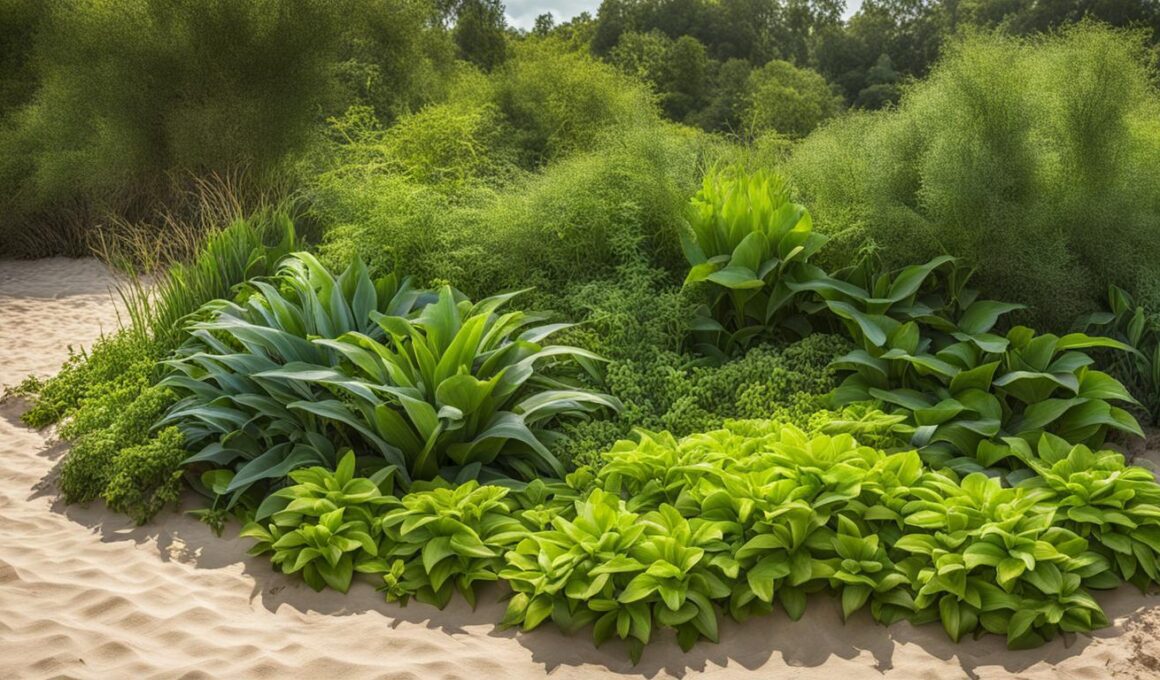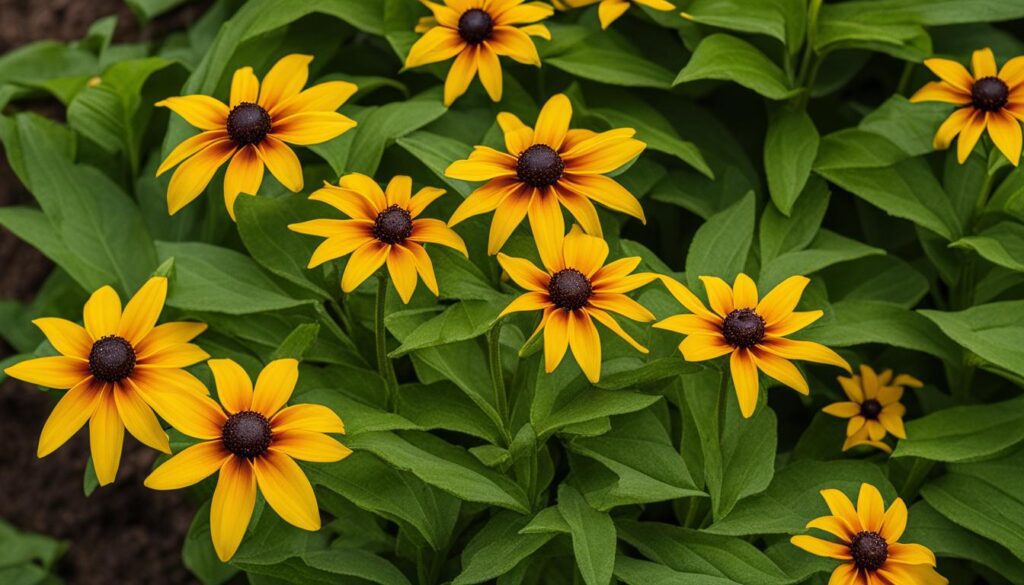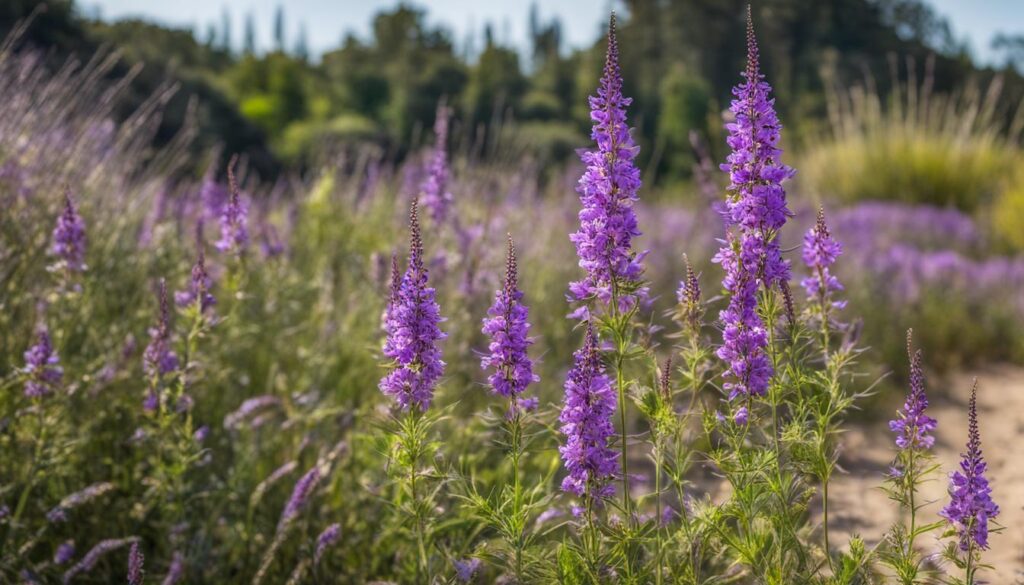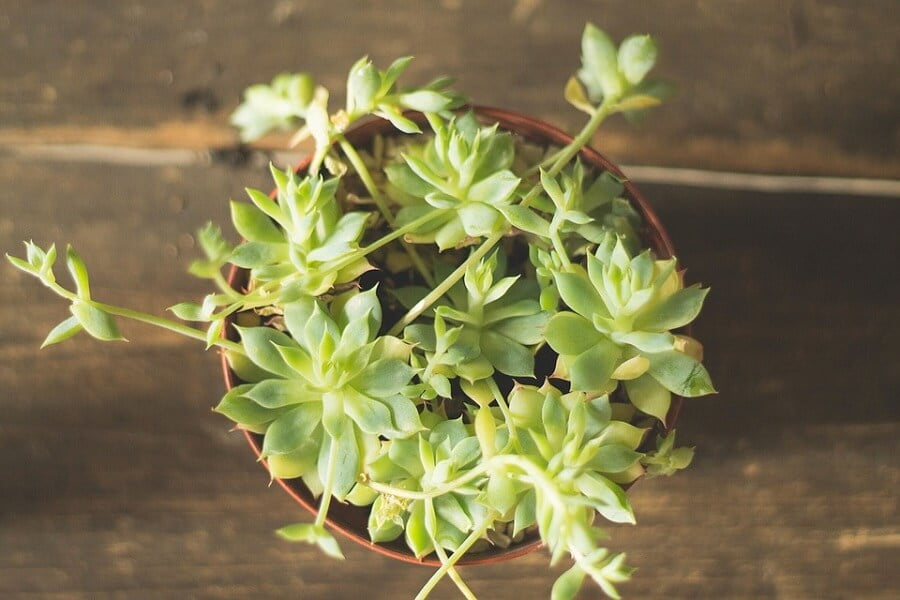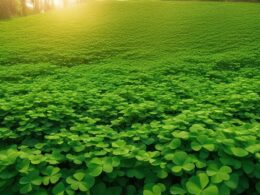Sandy soil can be a challenge for gardeners, but with the right plant selections, you can create a lush garden that thrives in these conditions. Whether you have sandy soil in your yard or are looking for plants that can withstand sandy conditions, there are several options to choose from. We have compiled a list of plants that not only tolerate sandy soil but actually thrive in it. These plants are suited for zones 3-9 and offer a variety of colors, textures, and bloom times to create a beautiful landscape.
Key Takeaways:
- Choose the right plants that can tolerate and thrive in sandy soil conditions.
- Consider bearded iris, black-eyed Susan, Russian sage, salvia, and sedum for your sandy soil garden.
- These plants offer vibrant colors, easy maintenance, and reliable blooms.
- Zone 3-9 is suitable for growing these plants in sandy soil.
- Create a beautiful landscape by incorporating these plants into your sandy soil garden.
Bearded Iris (Iris germanica)
Bearded iris is a popular choice for gardens with sandy soil. These plants come in a wide range of colors and require very little attention. They can withstand challenging conditions and can compete for their place in the garden. Bearded iris rhizomes multiply quickly, so dividing the plants every few years is advisable to prevent overcrowding. Many bearded irises are reblooming, providing color in late spring and early to mid-fall.
When it comes to sandy soil gardening, bearded iris, also known as Iris germanica, is an excellent choice. These plants offer not only beauty but also resilience in adverse conditions. With their vibrant colors and low-maintenance nature, bearded irises are sure to thrive in your sandy soil garden.
The Beauty and Resilience of Bearded Iris
Bearded iris plants are known for their stunning flowers that come in a variety of colors, including purple, yellow, white, and more. Their richly blooming petals and distinctive beards make them a standout addition to any garden.
One of the advantages of bearded iris is their ability to tolerate sandy soil, which is often considered a disadvantage for many plants. Sandy soil provides good drainage, preventing waterlogging and root rot. Bearded iris can adapt to these conditions, making them an ideal choice for sandy soil gardening.
These resilient plants are also known for their ability to compete with other garden plants. Their rhizomes rapidly multiply, allowing them to establish themselves and compete for space in the garden. However, to prevent overcrowding, it is recommended to divide bearded iris every few years.
In addition to their beauty and resilience, many bearded iris varieties are reblooming. This means that after the initial blooming period in late spring, they can produce more flowers in early to mid-fall, providing color and interest in your garden during multiple seasons.
“Bearded iris is a true gem for sandy soil gardens. Its vibrant colors, low-maintenance nature, and ability to thrive in challenging conditions make it a must-have plant for any sandy soil gardener.” – Gardening Expert
With their stunning blooms, adaptability to sandy soil, and reblooming capabilities, bearded iris plants are an excellent choice for sandy soil gardeners. Their ability to thrive in challenging conditions and provide visual appeal makes them a standout addition to any garden.
Black Eyed Susan (Rudbeckia)
Black-eyed Susan is a must-have plant for gardens with sandy soil. This plant produces yellow daisy-like flowers with black centers, reaching up to 3 feet tall. The ‘Goldsturm’ variety is particularly popular, blooming profusely from mid-summer to early fall. Black-eyed Susans are known for their ability to tolerate sandy soil and are a favorite among gardeners for their vibrant blooms.
The cheerful yellow blooms of Black-eyed Susan add a pop of color to sandy soil gardens. Their daisy-like flowers attract butterflies and bees, making them a delightful addition to any garden. These hardy perennials require minimal care, making them perfect for sandy soil gardening.
Russian Sage (Perovskia atriplicifolia)
Russian sage, also known as Perovskia atriplicifolia, is a favorite among sandy soil gardeners for its easy maintenance and reliable color. This perennial plant features beautiful purple-blue colored blooms that open in mid-late summer on 3-4′ spikes.
Russian sage’s vibrant purple hue adds a pop of color to any garden, making it an excellent choice for sandy soil conditions. Its long-lasting blooms attract butterflies and bees, adding life to your garden. The plant’s silver-gray foliage also provides a unique texture that complements its colorful blooms.
In addition to its aesthetic appeal, Russian sage is well-suited for sandy soil gardening due to its ability to withstand drought and poor soil conditions. It has a deep root system that allows it to take in nutrients and water from deep within the soil, making it an ideal choice for sandy gardens. Once established, Russian sage is relatively low maintenance, requiring minimal watering and pruning.
To incorporate Russian sage into your garden, plant it in well-drained sandy soil in a location that receives full sun. Avoid overwatering, as this can lead to root rot. Pair Russian sage with other plants that thrive in similar conditions, such as sedums, yarrows, and lavender, to create a cohesive and visually stunning garden.
Salvia (Salvia nemorosa)
Salvia is a versatile plant that thrives in sandy soil. The ‘Lyrical Silvertone’ variety is a 2′ tall purple salvia that blooms from late spring to early summer. As a member of the mint family, salvia is low maintenance and reliable. Another option is the ‘Blue Marvel,’ which adds blue to the summer garden. This compact variety grows to be 10-12″ tall and provides constant color from late spring to fall. Salvia is an excellent choice for short border edges and offers a diverse range of vibrant colors.
Sedum (Sedum)
Sedum, specifically the ‘Autumn Joy’ variety, is a reliable plant that thrives in sandy soil. This plant produces a clump of pink flowers that grow to about 2′ tall. Blooming from mid-summer to mid-fall, Autumn Joy offers a burst of color when other perennials are starting to slow down. Sedum is a carefree plant that requires little attention, making it a go-to choice for sandy soil gardeners. Its ability to withstand challenging conditions and provide consistent beauty makes it a popular selection.
Conclusion
Sandy soil gardening can be a challenge, but there’s no need to worry. With the right plant selections, you can transform your sandy soil into a thriving garden. The plants mentioned in this article, including bearded iris, black-eyed Susan, Russian sage, salvia, and sedum, are perfect choices for sandy soil conditions. Not only do they tolerate sandy soil, but they actually thrive in it, making them ideal for creating a vibrant and beautiful landscape.
These plants offer a variety of colors, textures, and bloom times, adding visual interest to your garden throughout the year. Whether you’re looking for bold and showy flowers or delicate foliage, there’s a sandy soil plant selection that will meet your needs. Additionally, these plants require minimal maintenance, allowing you to enjoy your garden without spending hours on upkeep.
By incorporating these thriving plants for sandy soil into your garden, you can overcome the challenges of sandy soil gardening and create a landscape that flourishes in these conditions. Experiment with different combinations and arrangements to find the perfect balance of colors and textures. With a little patience and care, you can turn your sandy soil into a stunning oasis that will be the envy of your neighbors.
So, don’t let sandy soil hold you back. Embrace the unique characteristics of your soil and make the most of it with the right plant selections. With these sandy soil recommendations and your green thumb, your garden will thrive and bring joy for years to come. Happy gardening!
What are the Best Thriving Plants for Sandy Soil on the North Side of a House?
When it comes to thriving plants for northside, some great options for sandy soil include lavender, Russian sage, and yarrow. These plants are hardy and drought-tolerant, making them ideal for the conditions typically found on the north side of a house. Additionally, they can add beauty and texture to the landscape.
FAQ
What are the best plants for sandy soil?
The best plants for sandy soil include bearded iris, black-eyed Susan, Russian sage, salvia, and sedum.
How do I care for bearded iris in sandy soil?
Bearded iris is low-maintenance and requires very little attention. Dividing the plants every few years is advisable to prevent overcrowding.
What is the ‘Goldsturm’ variety of black-eyed Susan?
The ‘Goldsturm’ variety of black-eyed Susan is particularly popular, blooming profusely from mid-summer to early fall.
What makes Russian sage a good choice for sandy soil?
Russian sage is a favorite among sandy soil gardeners for its easy maintenance and reliable purple-blue blooms that add color to any garden.
What are some varieties of salvia that thrive in sandy soil?
Some varieties of salvia that thrive in sandy soil include the ‘Lyrical Silvertone’ and ‘Blue Marvel’ varieties, which offer vibrant purple and blue colors respectively.
How do I care for sedum in sandy soil?
Sedum, specifically the ‘Autumn Joy’ variety, is a reliable plant that requires little attention. It produces clumps of pink flowers and blooms from mid-summer to mid-fall.
What are some benefits of planting these selections in sandy soil?
These selections not only tolerate sandy soil but actually thrive in it, providing vibrant colors, easy maintenance, and reliable blooms.





